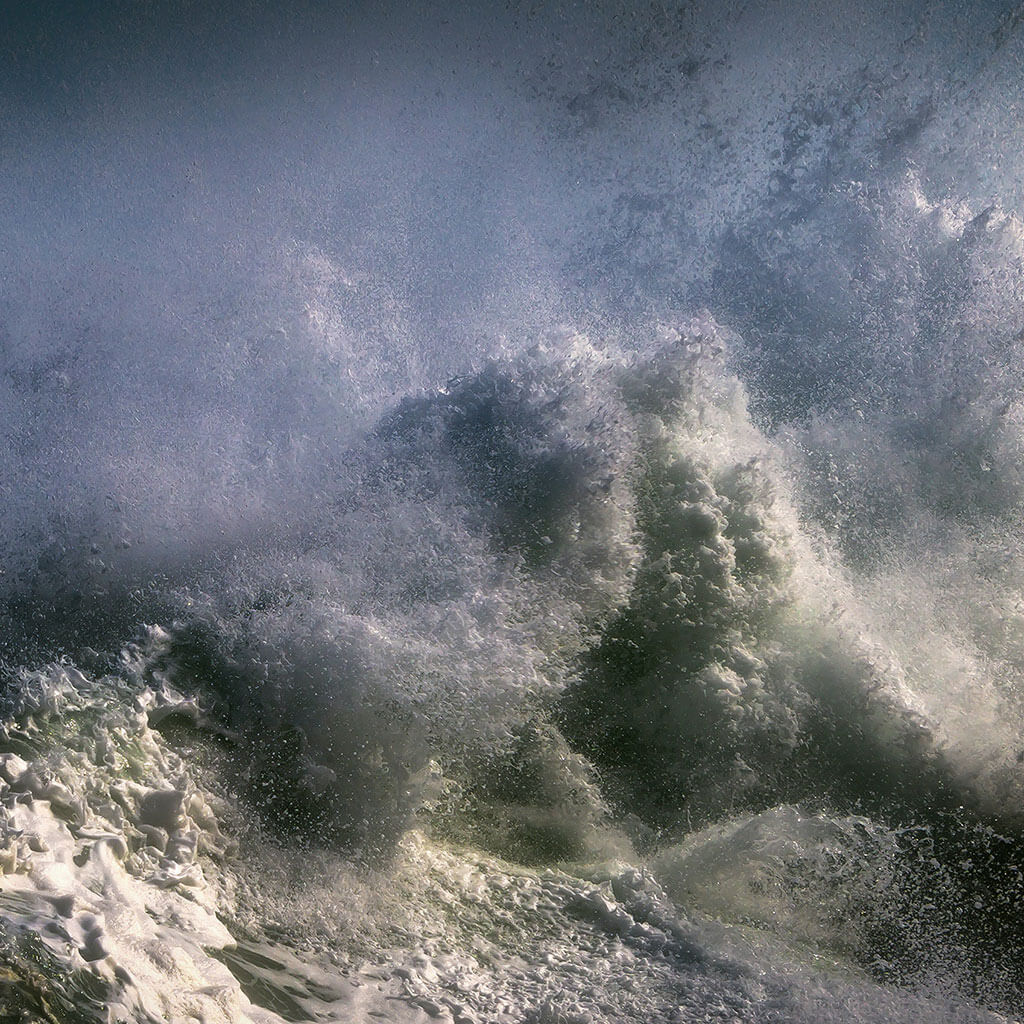Inspired for an Adventure? Check out Beef Stroganoff - Pouch and Beef Stew - Pouch
Free Ground Shipping On All Orders
Over 2,100 Reviews
Add description, images, menus and links to your mega menu
A column with no settings can be used as a spacer
Link to your collections, sales and even external links
Add up to five columns
Add description, images, menus and links to your mega menu
A column with no settings can be used as a spacer
Link to your collections, sales and even external links
Add up to five columns


With the impacts of hurricanes Florence and Michael still being felt along the Atlantic and Gulf coasts, and the Category 5 Super Typhoon Yutu currently bringing winds of 180 miles per hour to the Northern Mariana Islands, we wanted to highlight some fundamentals of hurricane safety here at the Mountain House blog.
A Reminder of Hurricane Danger
As last year, when hurricanes such as Harvey, Irma, and Maria devastated Texas, Florida, Puerto Rico, and other parts of the U.S., the past couple of months have demonstrated the vital need to understand the dangers posed by tropical cyclones, the proper precautions to take in advance of them, and safety procedures during and after the storm.
The 2018 Atlantic hurricane season was relatively quiet at first, but it intensified in a hurry at the very end of August with the formation of Hurricane Florence. Peaking at a Category 4 storm, Florence had been downgraded to Category 1 when it made landfall in North Carolina on September 14th. The slow-moving Florence slammed the coastal Carolinas with a powerful storm surge and heavy rains, causing widespread flooding there and also well inland; it’s one of the wettest hurricanes to ever hit the U.S. Thus far Hurricane Florence’s impacts have been measured at better than $13 billion in damage, and more than 50 lives have been lost as a result of the storm.
The Carolinas were still reeling from that drenching tropical cyclone when Hurricane Michael whirled into existence in the Caribbean Sea in early October. Michael intensified rapidly and struck the Florida Panhandle on October 10th as a Category 4 hurricane with peak winds estimated at 155 miles per hour—just shy of Category 5 status. This was the strongest hurricane to hit that part of Florida in recorded history, and made Michael one of the strongest to make landfall anywhere in the U.S. The damage has so far been estimated at beyond $8 billion, and at least 54 deaths have been connected to the hurricane.
As of this writing, Super Typhoon Yutu—tied as the most powerful tropical cyclone of 2018—is impacting the Northern Mariana Islands: a stark reminder, like this year’s hurricane scares in Hawaii, that Atlantic and Caribbean tropical cyclones aren’t the only ones to threaten parts of the U.S.
During & After a Hurricane
We’ll highlight this reference again, but first and foremost we urge you to closely study the FEMA recommendations for safety before, during, and after a hurricane.
The most important safety measure you can take in the face of a hurricane is to heed evacuation orders from local authorities. Riding out storms of this magnitude puts your life at risk, and the weather may well be too dangerous for rescue workers to come to your aid. Sometimes you may not fall within a mandatory evacuation zone, but should still consider seeking safer refuge elsewhere.
It’s also essential not to return to your home until the all-clear has been given: Even after the hurricane itself has passed, conditions may continue to be hazardous to life and limb, and entering the area prematurely may also impede important emergency-response efforts.
Besides obeying evacuation orders, you should pay close attention to reports from the National Weather Service/National Hurricane Center so you’re keeping track of a hurricane’s progress and the most up-to-date predictions for areas at risk of damaging winds, torrential rains, and both coastal and inland flooding. Familiarize yourself with the terminology used in hurricane forecasts.
During a Hurricane
If you aren’t able to evacuate before a hurricane hits, you should follow the instructions given by FEMA for final preparations ahead of the storm, including informing friends and family of your location and plans, turning your fridge and freezer to their coldest settings, and charging up your cell phone.
During the hurricane itself, you should hunker down in a designated storm shelter or, failing that, an interior room on the lowest floor of a building that isn’t vulnerable to flooding, staying well clear of windows, doors, and glass structures. If you’re in a building being threatened by flooding, head for the highest floor (not a closed attic).
Never walk or drive through floodwaters: Flooding is statistically speaking the most dangerous element of a hurricane. A mere six inches of moving water can sweep you off your feet; a foot of it can wash a car away. “Turn Around, Don’t Drown!” is the mantra.
After a Hurricane
Keep monitoring any reports and advisories from authorities. Continue to avoid floodwaters, including stagnant water, which may be electrified by downed power lines, full of hazardous debris, and polluted. If you’re able to do so safely, shut off electricity at the breaker/fuse box.
Don’t make phone calls unless it’s an emergency; keep phone lines clear for emergency response otherwise by using texts or online messages to contact others.
Again, don't rely on this blogpost alone to prepare for a hurricane! Familiarize yourself with FEMA's hurricane preparedness and response information; other good resources include this from the National Hurricane Center, the Red Cross's hurricane guidelines, and these post-hurricane considerations from the Centers for Disease Control and Prevention.
Hurricanes 101
Hurricanes are among the largest and most violent storms our Planet Earth brews up: real cyclonic monsters powered by warm ocean waters that may sprawl across hundreds of miles and last for many days. Millions of people in the United States, particularly along the Gulf and Atlantic coasts, reside in high hurricane-risk zones, and millions more may be affected by rainy hurricane remnants tracking far north or well inland.
In this article, we’ll discuss how to prepare for a hurricane—much of which is best done when there isn’t one bearing down. We’ll review hurricane forecasts and what they mean, hurricane prep lists for your home, and hurricane emergency kits and evacuation plans. Read on to learn how you can get ready for these atmospheric titans!
Hurricane Season
Hurricanes require ocean waters of a certain temperature (roughly 80 degrees Fahrenheit down to about 150 feet deep) in order to form, which means in most ocean basins they’re a seasonal phenomenon. (In the Northwest Pacific, where they’re known as “typhoons,” they can essentially develop year-round.)
When should you be on base-level hurricane alert? The North Atlantic hurricane season officially lasts from June 1 to November 30, with mid-August through late October the peak interval. The Eastern Pacific hurricane season lasts from May 15 through November 30.
Hurricane Risks: Many & Varied
Hurricane winds are awe-inspiring in their power: The strongest hurricanes, ranked as Category 5, claim winds of 157 miles per hour or better. Even a Category 1 hurricane, with winds of between 74 and 95 miles per hour, can topple trees and ravage roofs, siding, and mobile homes. Whether from collapsing structures or airborne projectiles, these storm gales are absolutely life-threatening.
But wind isn’t the only threat. Overall, more people die from the floodwaters stemming from a hurricane, which can take the form of storm surges and storm tides—devastating coastal seawater pulses that may be 15 feet or more above normal high tide—as well as inland flooding resulting from torrential rains. Even after a hurricane transitions into a weakening windstorm, its intense precipitation can create flooding risks in places far from the cyclone's initial landfall.
If a hurricane wasn’t bad enough, it sometimes can spawn tornadoes: much smaller tempests that nonetheless may pack higher winds. Lightning’s a more widespread risk.
As with any natural disaster, meanwhile, hurricanes can also create a whole messy host of secondary problems: blocked transportation routes (which may delay emergency responders from reaching affected areas), widespread power outages, contaminated water supplies, and the like.
All this underscores the importance of understanding your specific hurricane risks and developing a hurricane preparedness list. These storms can be really epic disasters with prolonged impacts: Planning and preparation are an absolute must so you stay safe and comfortable during and after the catastrophe.
Understand the Forecast
It’s imperative to pay close attention to weather forecasts during hurricane season, and to follow them closely by radio or TV if a watch or warning has been issued for your area. (It’s an excellent idea to include a NOAA Weather Radio among your emergency supplies.)
We’ll explain watches and warnings in a moment, but, first off, a little meteorological terminology: Hurricanes evolve from less-intense disturbances called tropical storms (which, in turn, arise from low-pressure disturbances called tropical depressions). A tropical storm packs winds of at least 39 miles per hour; if they ramp up to 74 miles per hour, the tropical storm officially becomes a hurricane. Of course, you need to pay attention to tropical storms not only because they may graduate to hurricane status, but also because they’re plenty destructive in their own right.
The National Weather Service (NWS) issues Tropical Storm Watches or Hurricane Watches when conditions are favorable for the development of storms. The agency posts watches 48 hours ahead of the projected development of tropical-storm-level winds. If a tropical storm or hurricane watch is issued for your area, heed the alert: Get your home ready, ensure your vehicle’s got a full tank of gas, and go over your evacuation plan.
A Tropical Storm Warning or Hurricane Warning—released 36 hours ahead of anticipated storm-force winds—means the NWS expects a tropical storm or hurricane to develop. In the event of a warning, you should be wrapping up prep and getting ready to evacuate should officials direct you to.
The NWS also issues Extreme Wind Warnings when the most intense winds of a major hurricane (Category 3 or higher) will likely hit within the hour. An Extreme Wind Warning means you should immediately take shelter.
Hurricane Home Prep
So how do you prepare for a hurricane? If you live in a coastal area vulnerable to hurricanes, you might want to consider permanent structural enhancements for your home. This might include the installation of a safe room, a reinforced refuge independent of your house’s structure and built to withstand hurricane-force winds. (We wrote about safe rooms recently here at the Mountain House blog—check it out!) You can also install metal “hurricane straps” to bolster your roof and reinforce your garage door: Torn-off roofs or garage doors allow hurricane winds to enter the interior of your home and wreak real havoc.
You might also raise your electrical utilities above the projected flood level for your area to better safeguard them from storm surges or other hurricane-caused deluges. Buy a generator so you’re ready for the power outages a hurricane commonly creates. And keep trees close to your house and other structures trimmed.
If a tropical storm/hurricane watch has been issued for your area, bring inside yard furniture and any other loose objects that might become airborne (and therefore dangerous) in high winds, and anchor heavier infrastructure such as sheds and propane tanks.
Ahead of a hurricane, you should also cover windows and doors: Permanent hurricane shutters are the best choice, but plywood’s better than nothing. Unplug electrical appliances, move possessions from lower to higher levels of the house (in anticipation of floodwaters), and set your fridge and freezer to their coldest settings in case of a power outage, in which case keeping those appliances as cold as possible—which also means minimizing how many times you open them—will maintain their food supplies longer.
You can find more details on hurricane home preparation in this Federal Emergency Management Agency factsheet.
Putting Together a Hurricane Kit
Assemble a hurricane emergency kit before a tropical cyclone (or any other disaster) strikes. We’ve written about disaster preparedness kits here at the Mountain House blog before (for example, in our “How to Be an Urban Prepper” post), but let’s review some of the basics.
You definitely want at least three days’ worth of non-perishable food and water, and preferably more. With the longest shelf life in the industry, Mountain House meals—including our Just In Case…® emergency food supplies—make excellent provisions for your hurricane survival kit. (We go into more depth on emergency food storage principles in this blogpost.)
Water-wise, you need at least a gallon per person per day. It's smart also to include some means of treating potentially unsafe water, such as household liquid bleach or a water purifier.
Your hurricane kit should also have first-aid materials, prescriptions, backup eyeglasses, flashlights, extra batteries, matches, extra clothing and blankets or sleeping bags, cash or traveler’s checks, a wrench or pliers for shutting off your utilities, and other essentials. (Check out this FEMA brochure for a hurricane kit list.)
You should keep a hurricane emergency kit at home, at your workplace, and in your vehicle. (And speaking of: Be sure to outfit your car with its own specific emergency supplies, such as jumper cables and extra fluids. If you need to evacuate, you’re going to be relying on your vehicle for safety, so you want to keep it well stocked and in good working order.)
Keep in mind: You don’t want to be gathering all your hurricane preparedness supplies in the couple of days ahead of landfall, as store shelves may be picked over. Plan ahead! (You can learn some tips on savvy emergency stockpiling in our “Prepping on a Budget” blogpost.)
Hurricane Evacuation Plan
Ahead of a hurricane making landfall, officials may issue evacuation orders for residents of coastal communities and any other vulnerable zones. Heed any such orders pertaining to your area: Those who fail to evacuate not only place themselves at mortal risk, but can also endanger emergency responders.
Develop a household emergency plan and familiarize yourself with evacuation routes for your home as well as schools, workplaces, and anywhere else you or a member of your family spends a lot of time. Maintain a list of important emergency numbers: from local law enforcement and utility companies to a friend or family member out of the region who can serve as a point of contact for your household in case you’re separated.
As with any disaster, learning how to survive a hurricane means accepting (not shying away from) the risk, planning and prepping ahead of time, and closely following any advice or evacuation orders issued by government officials and/or emergency managers.

How to Rotate Emergency Food: FIFO and Other Rotation Methods

The First 72 Is on You: Survival Kit Checklist + Printable PDF


Stay Hungry for Adventure
Sign Up for Delicious Outdoor Meals & Exclusive Offers!
By clicking ‘Join Now’, I agree to the Terms of Service and Privacy Policy.


Join the adventure
©2025 Mountain House — All Rights Reserved.
Your Cart is Empty
Continue ShoppingYour Cart
Subtotal
$0.00
EXPRESS PAYMENT METHODS AVAILABLE IN CHECKOUT
Taxes and Shipping Calculated at Checkout
Your ExpertVoice deal.
$[Deal Price]
$[Original Price]
Discount applied at checkout.
On sale now — lower than your ExpertVoice discount.
Not eligible for ExpertVoice discount.














